A few months ago, I visited Venice for the first time to celebrate my 40th birthday. While I was there, I thought — and wrote — about my grandfather’s previous visits to the city. I knew he passed through Venice in 1939, when he fled Budapest to escape rising anti-Semitism. But I didn’t know much else about his travels: how long did he stay, I wondered? Where did he sleep? What did he think about the city?
Now, thanks to the “mystery letter” I wrote about yesterday, I have a much better sense of his itinerary. And from Árpád’s letters, I also have a better sense of why Opapa went to Italy, and for how long.
Let’s start with Árpád’s letter, since that offers Opapa’s general escape plan.
On April 9, 1939, Árpád wrote a letter to Opapa’s half-brother Laci, who was living in California. He explained the difficulties they were having arranging Opapa’s travel to the United States:
Gyuri [i.e. Opapa] set out on his journey in the evening on the 7th, Good Friday, and he is travelling through Italy. He could not arrange anything at the American – USA – consulate. It is impossible to get in there. They assign you a series number for the end of July. Therefore, there is no chance for him to get a transit visa via New York – as you have suggested. And since he did not have anything else to do, he left. As he messaged in a telegraph, his French visa will be valid for two weeks for only transiting the country and according to the documents, he must start using it on April 28th, the latest. Gyuri says it is a great favor and luck that he even could get this. Kanders Sándor help him in this.
From Árpád, we learn some basic facts:
Opapa left Budapest on April 7, 1939.
He was traveling through Italy (the subtext is that Opapa could not travel through the German Reich), and planned to get an oceanliner from France.
But Opapa had neither a ticket nor a visa. Árpád didn’t want to buy a ticket for an oceanliner before his son had a visa, but Opapa couldn’t get a visa to enter the US. He hoped to arrange a visa to Mexico once he got to Paris, but that was not assured.
Opapa was able to get a transit visa for France, but it would only last two weeks. He had to start using it by April 28, 1939.
It was a maddening puzzle with multiple moving parts.
Árpád hoped that his son would be able to take the “Iberia,” an oceanliner owned by the German company, Hapag. It departed from Cherbourg on April 30:
Therefore, there is no other solution than the already mentioned Hapag ship. It the ship called Iberia, which leaves from Cherbourg on April 30. He has already paid the deposit for a ticket for this journey, I have the money for the travel expenses – for the return journey as well – and unless something unexpected comes up, I will buy the ticket on the 15th. This nonetheless has some risks, but we have to take these risks, as without a US visa, there is no other solution.
In order to take the Iberia, Opapa needed to time his entry into France very carefully: since he only had two weeks on his French visa, he needed to arrive no longer than two weeks before the oceanliner departed. Since the Iberia departed on April 30, then Opapa could not enter France before April 16th.
One odd side effect of this complicated situation was that Opapa had quite a lot of time to travel around northern Italy. He would take the train from Trieste to Ventimiglia, and get off periodically to extend his time:
Gyuri will get off the train in a couple of cities in Italy, because if he wants to take the ship in Cherbourg on the 30th, he cannot start his stay in France earlier than the 16th. By the time you get my letter, he will be in Paris. We expect that by then the certificate about the payment of the deposit will be waiting for him there and therefore he will get the Mexican visa immediately or at least in due time.
It was not the best of circumstances, but Opapa made the most of it. He had a week to travel around Italy! So he went sightseeing, wrote about the landscape, and made observations about Italian culture. “We arrived at the Italian border in the morning,” he wrote to Matyi. “The karst-like landscape started here. Only about a handbreadth of farmland among a lot of rocks. It is interesting that I have not seen a field with crops during my whole trip.”
His first stop was Trieste, for a brief stopover. “I got to see the sea at Trieste,” he wrote. “I was waiting for that moment – and I was not disappointed.” Little did he know that he would be back in Trieste six years later, as an American OSS officer, using the city as a base to go on secret missions.
Next stop was Venice.
Venice was a wonder. “Venice is built completely on water and the train goes there on a long embarkment.” He drew a picture to explain:
Upon arrival in Venice, he took a boat to the Hotel Budapest (a place I have not been able to identify). After lunch, he walked to San Marco Square, where he climbed the Campanile. He “regretted” this decision “at about the 30th round,” but the view from the top was worth it. “You cannot forget it,” he wrote.
Opapa loved Venice. “There is nothing “interesting” in Venice,” he explained to his brother. “Venice is a wonder in itself, just the way it is,” he wrote. “There is nothing (almost nothing) that you officially need to see, the whole city is a huge attraction.”
Opapa took pictures as he traveled — he brought his camera along with his zither. And as it turns out, we still have some of these photos, since Opapa compiled them into an album:
These photos are both of San Marco square — the photo on the left is the campanile, which Opapa walked up, and the photo on the right shows the San Marco Basilica. He probably took these between April 8-10, 1939.
It was exciting to see these photos because, among other things, I had recently visited San Marco square — on my 40th birthday in March, almost 84 years after Opapa. It was cloudy day, so I didn’t climb the campanile, but I did take a photo from the Basilica. You can see the campanile rising up to the right of the four horses of San Marco (Sean’s favorite objects in Venice).
Much has remained the same since Opapa visited: same buildings, same canals. And yet, of course, the differences are drastic — when Opapa visited in 1939, Mussolini was in power, and the Nazis were ascendant. Also, sea levels were lower. A few years ago, the Italian government spent a tremendous amount of money to build “flood proof” defenses to protect San Marco Basilica. Even so, it floods nearly every day. You can even track flood levels on an app — they are mostly connected with the tide. So the last thing Sean and I did on my birthday was to visit San Marco square — for a second time — but this time at night, when the tide was rising and water started trickling up through the drains, filling the square and offering a stunning reflection of the basilica.
Opapa, too, commented on the differences between past and present as he toured around Venice in 1939, though he didn’t mention the rising water levels:
I have seen a lot of old pictures of medieval Venice. Nothing has changed. Apart from the motorboats, the people, and Mussolini’s quotes (these “decorate” the walls), nothing has changed, it is a piece of Medieval times.
It’s hard to imagine Mussolini’s quotes “decorat[ing]” the walls in Venice. But, of course, Mussolini himself also visited San Marco — it was a symbolic place that could easily be utilized as a demonstration of power.
In 1935, Mussolini chose San Marco as the place to introduce an ecstatic Italian public to none other than Adolf Hitler. Below, you can see the stunning Basilica of San Marco behind the two fascist leaders. You can see a video of the rally here.
One month after Opapa visited Venice, in May 1939, Hitler and Mussolini would sign their “Pact of Steel,” cementing the Italo-German alliance.
Venice was beautiful, but it wasn’t safe. Luckily for Opapa, he was on a boat to Mexico by the time Germany and Italy signed their pact. It was a very good thing he didn’t wait until July to get an appointment at the US consulate in Budapest. Europe’s borders were closing, and every day it was more difficult to escape.
***
Nuts to crack:
Árpád wrote that someone named “Kanders Sándor” helped Opapa get his two-week visa to France in 1939. Who is this?
I’m trying to figure out the exact train route that Opapa would have taken from Budapest to Trieste in April 1939. Did he go through Slovenia? The “fastest” route now would go through Austria but I’m assuming he would have avoided that.
I can’t find the “Hotel Budapest” in Venice. Can anyone else?


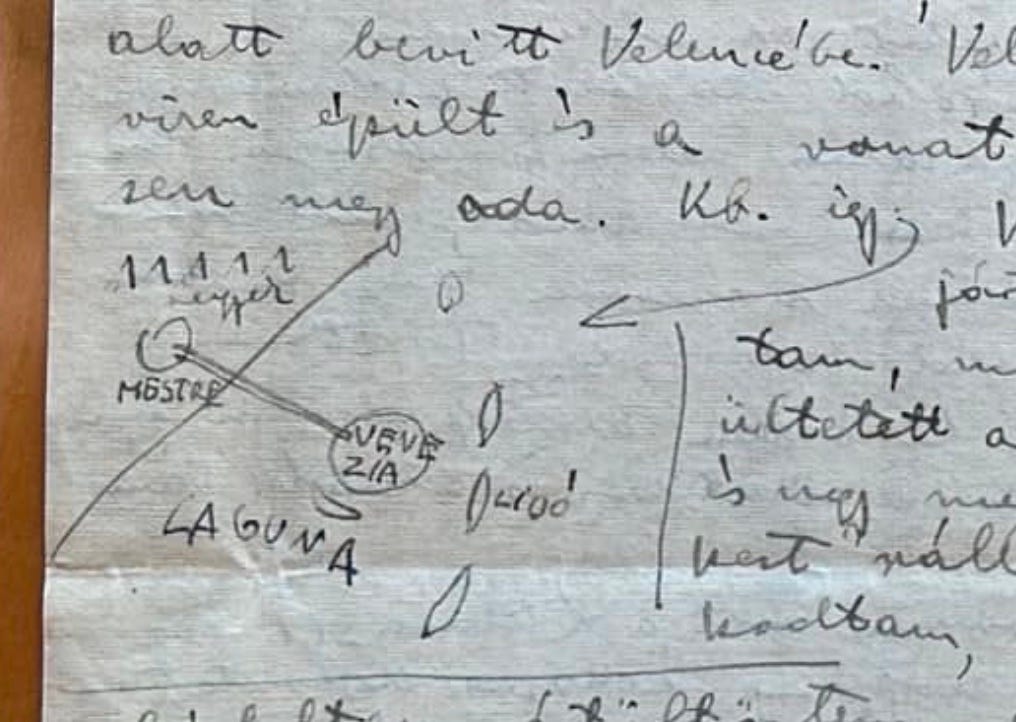
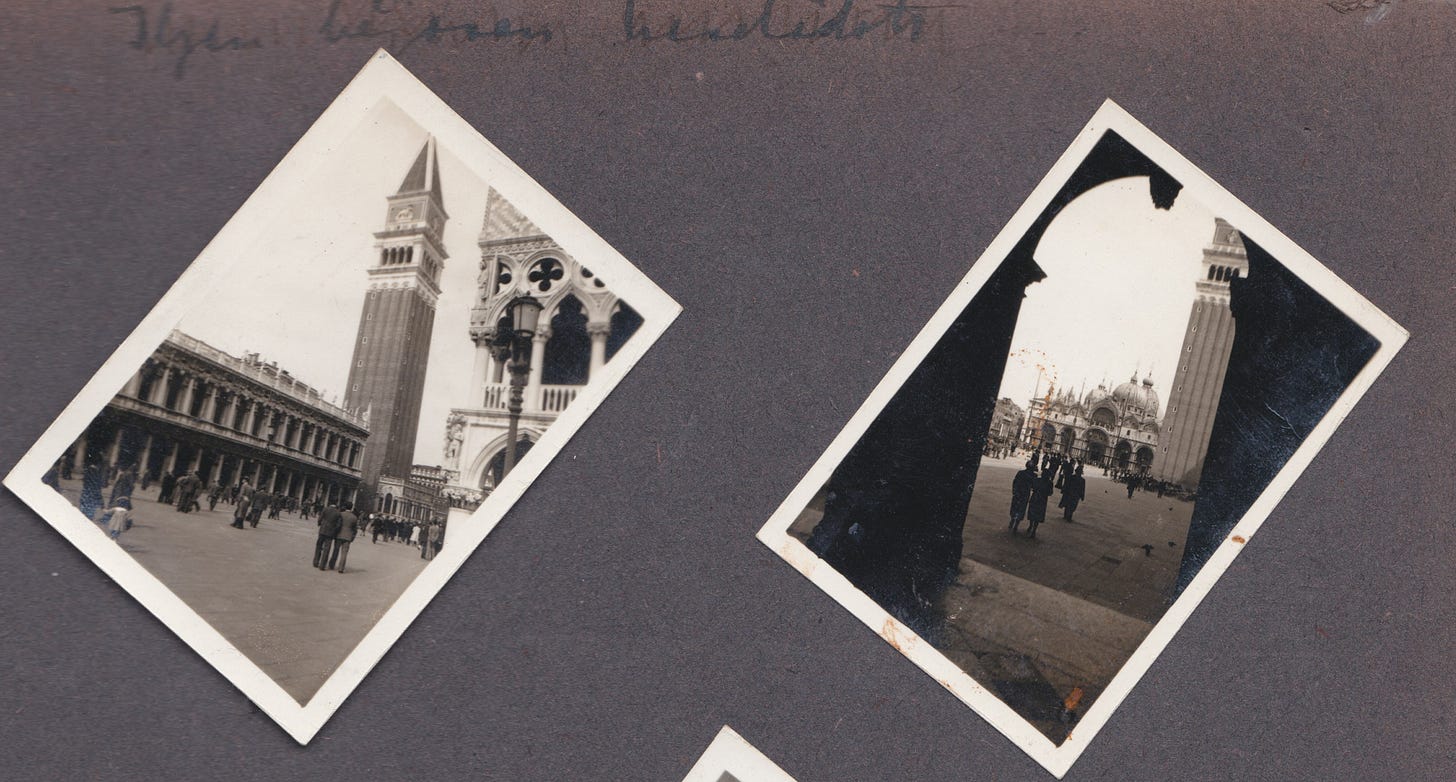
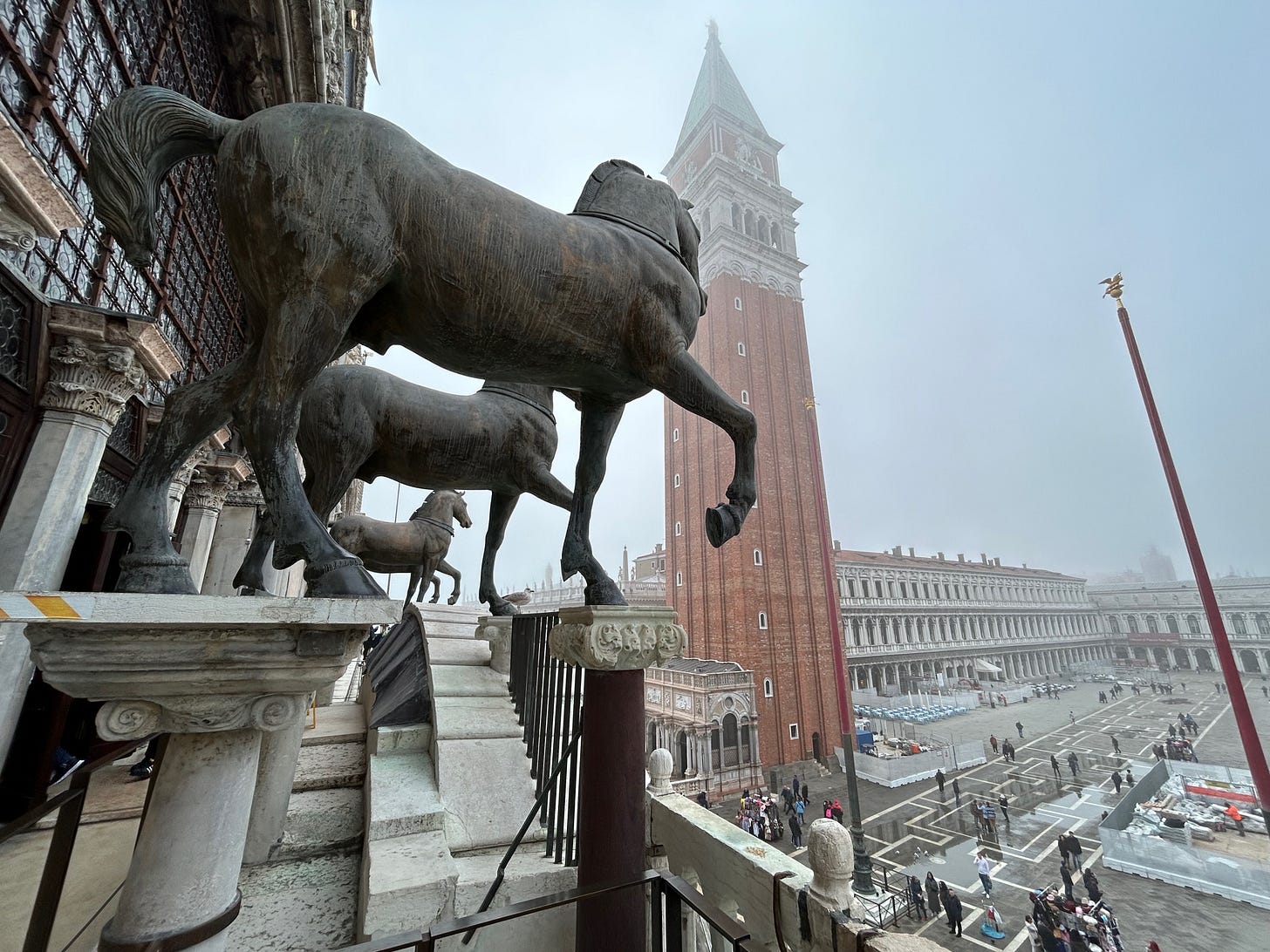
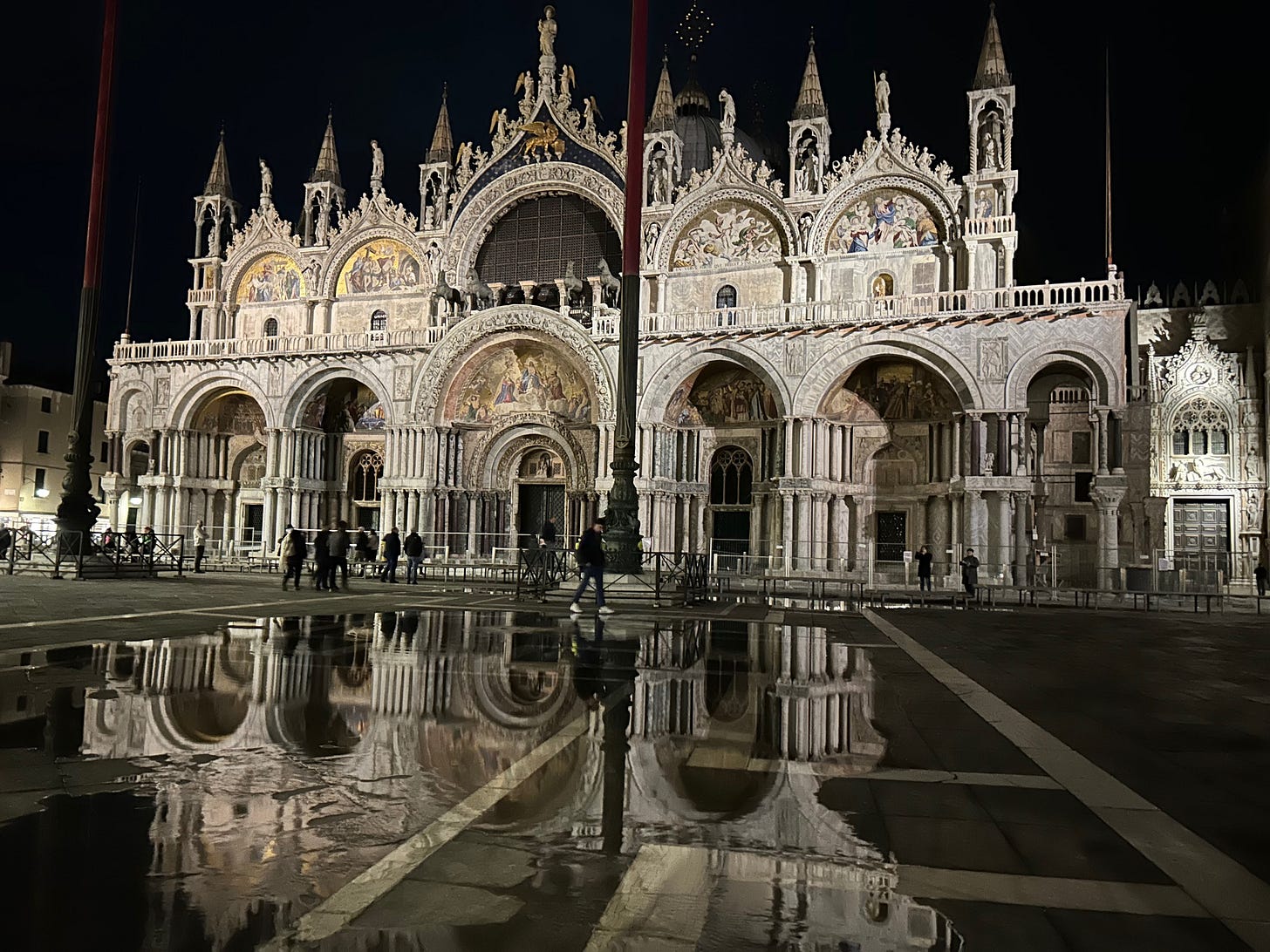
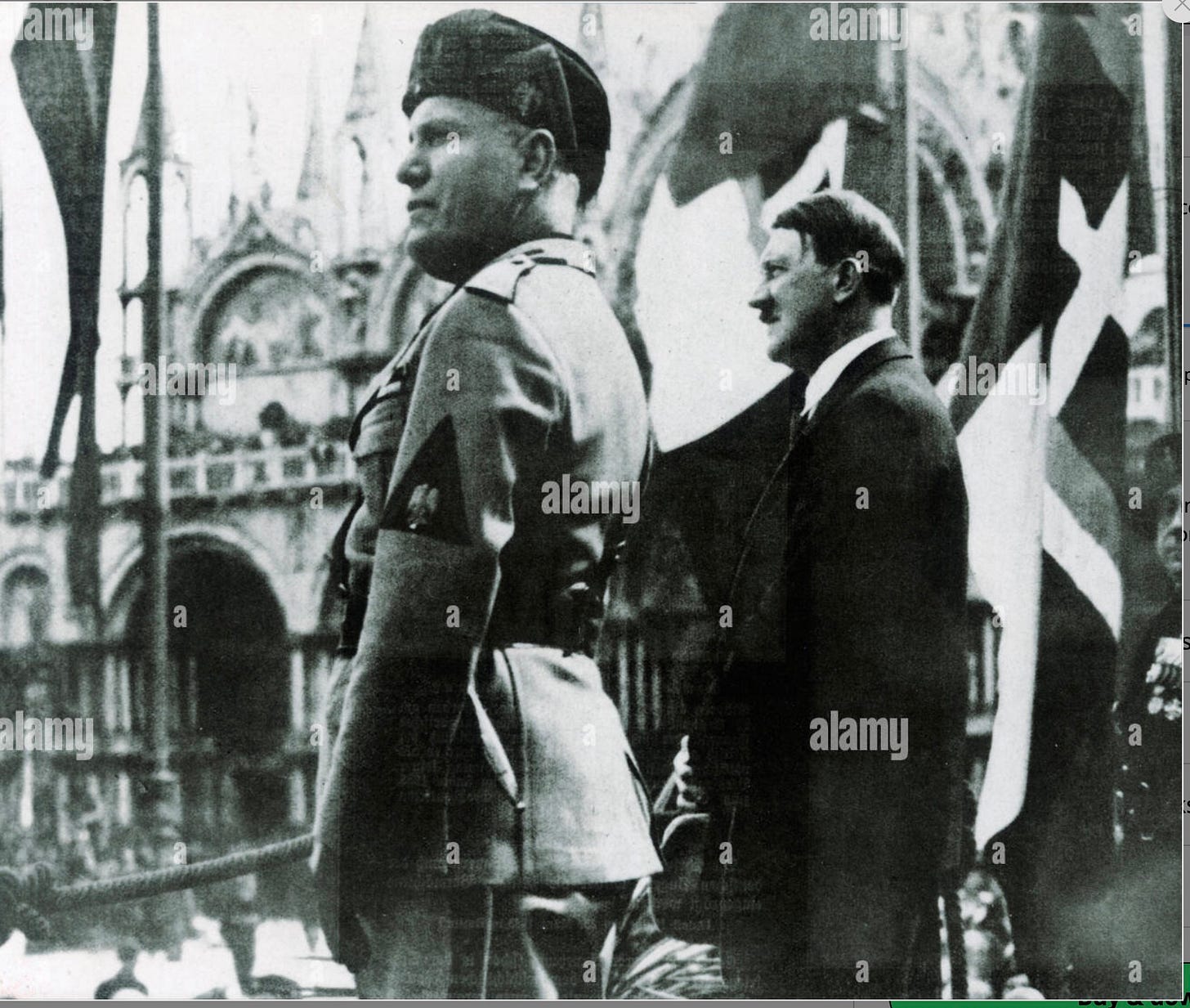
I love the way you wove your trip into the naarative...
Really interesting, Katie. And great work Janet, finding that postcard of Hotel Budapest in Venice! I tried and failed to find something. Katie, as you know, Mom and I were in Venice too but we missed San Marco at night and we didn't climb the Campanili. Too bad it rained so much.